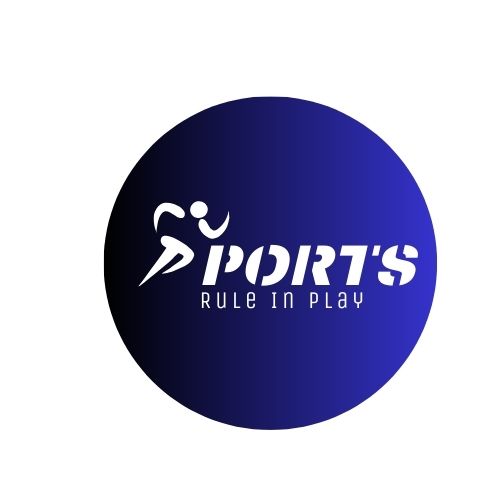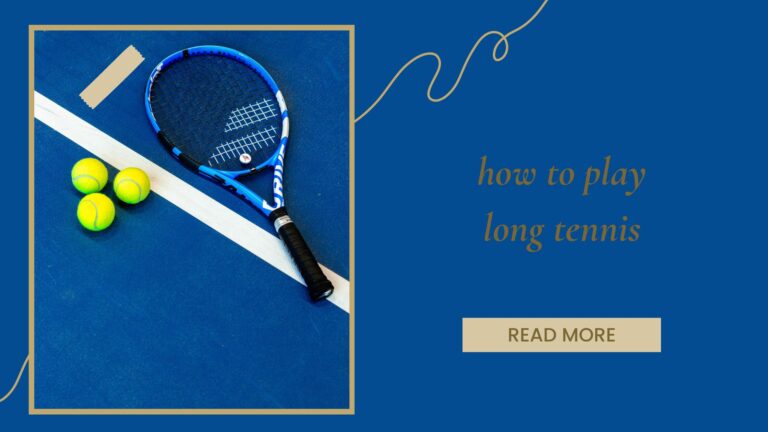Mastering the Game: 10 Rules of Tennis Unveiled
Tennis is an exhilarating sport that combines skill, strategy, and endurance. Whether you’re a beginner or a seasoned player, understanding the fundamental rules of tennis is crucial for an enjoyable and fair game. In this article, we’ll delve into the 10 rules of tennis that every player should know. These rules not only govern the game but also contribute to the spirit of sportsmanship and fair play.

10 Rules of Tennis
Here we are briefly explaining essential 10 rules of tennis every player should know:
Rule 1: The Court Layout
The tennis court is like a canvas where the exciting game of tennis unfolds. Divided into two halves by a net, the court is further delineated by boundary lines. Each half is known as a ‘court,’ and players must be vigilant about these lines to determine whether the ball is in or out. Understanding the court dimensions and markings is the first step in mastering the game.
Rule 2: The Serve
A game of tennis begins with a serve, a crucial element that sets the tone for the entire point. The server must stand behind the baseline, diagonally opposite the opponent’s court, and hit the ball into the service box. There are specific rules governing the serve, including the need to alternate between the deuce and ad courts and the requirement to serve within the service box. Mastering the art of the serve is essential for gaining an upper hand in a tennis match.
Rule 3: Scoring System
The scoring system in tennis might seem a bit perplexing at first, but it follows a logical pattern. The game consists of points, games, and sets. Understanding the sequence of 15, 30, 40, and game points, along with deuce and advantage scoring, is pivotal. Players need to win games to secure a set, and winning a predetermined number of sets leads to winning the match. This rule elucidates the scoring intricacies, making it easier for players to keep track of their progress.
Rule 4: Faults and Double Faults
In tennis, not every serve is flawless. When a player fails to execute a proper serve, it results in a fault. There are specific rules concerning faults, including foot faults and double faults. A double fault occurs when a player makes two consecutive faulty serves, resulting in the loss of a point. Understanding these rules is crucial for both servers and their opponents, as they directly impact the flow and outcome of the game.
See also : How to make a disc golf basket
Rule 5: In and Out
Determining whether the ball is in or out is a fundamental aspect of tennis. The boundary lines on the court play a pivotal role in making these judgments. If a player hits the ball outside the designated court area, it is considered out, and the opponent is awarded the point. Mastering the skill of accurate shot placement is essential for success in tennis, as it enables players to control the flow of the game and capitalize on their opponent’s mistakes.
Rule 6: The Net Game
The net game in tennis involves strategic maneuvers and quick reflexes. Players often engage in volleys and overheads, aiming to outmaneuver their opponents at the net. Understanding the rules governing net play, including the let rule, adds an extra layer of complexity to the game. Proper footwork and timely reactions are crucial for success at the net, making it an area where players can showcase their skills and gain a competitive edge.
Rule 7: Changeovers and Timeouts
Tennis is not just about the physical aspects of the game; mental stamina is equally vital. Changeovers and timeouts provide players with the opportunity to regroup, rehydrate, and strategize. Understanding the rules regarding the frequency and duration of these breaks is essential for players to optimize their performance throughout the match. These intervals also contribute to the overall rhythm of the game and allow spectators to witness the players’ mental and physical resilience.
Rule 8: Code of Conduct and Sportsmanship
Beyond the technical aspects, tennis is a sport that upholds a high standard of sportsmanship and fair play. The code of conduct in tennis encompasses rules related to player behavior, including etiquette, respect for opponents, and adherence to the principles of fair play. Understanding and embodying these values contribute to a positive playing environment and foster a love for the game. Upholding the code of conduct is as important as mastering the technical aspects of tennis, ensuring that the sport remains enjoyable and inclusive for players of all skill levels.
Wrapping Up
Mastering the fundamentals of tennis is a rewarding journey that encompasses a wide range of skills and strategies. From understanding the layout of the court and the basic rules of scoring to perfecting your strokes and developing effective strategies, each aspect contributes to your growth as a tennis player. Additionally, the importance of selecting the right equipment, staying fit, and preventing injuries cannot be overstated. By prioritizing proper technique, seeking expert guidance, and incorporating injury prevention and recovery tips, you can elevate your game while enjoying the thrill of playing tennis. So, embrace the challenge, stay determined, and remember to have fun on the court






